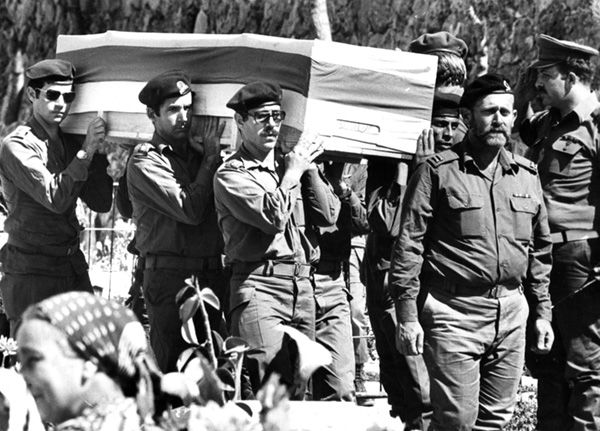On July 4, 1976, Israeli commandos carried out a daring raid to free more than 100 hostages held by pro-Palestinian terrorists at Entebbe Airport in Uganda. Ever since the raid has been portrayed as one of the most brilliantly planned and perfectly executed hostage rescues. Military schools and police academies across the globe teach the Entebbe raid as part of their curriculum on dealing with hostage situations.
The drama began on June 27, 1976, when an Air France Airbus was hijacked en route from Tel Aviv to Paris after a stopover in Athens. There were nearly 250 passengers on board, including eighty-three Israelis. Of the four initial hijackers, two of the hijackers were from the Popular Front for the Liberation of Palestine (PFLP) and two were from a German-based terror organization known as ‘The Baader-Meinhof Gang’.
The plane required refueling in order to make the journey to Uganda and landed at the Libyan airport in Benghazi. Libyan authorities claimed they did not allow the plane’s refueling, however, it was in the country for just over six hours before it took off towards Amman, Jordan. There is some speculation that the Jordanians refused to allow the plane to land, and in a frantic negotiation, Uganda agreed to let them land. The plane touched down in Entebbe, Uganda in the early morning of June 28.
Once on the ground, the hijackers separated the Jews and Israelis from the rest of those on board and demanded the release of Palestinian militants imprisoned in Israel and elsewhere. The Ugandan dictator, Idi Amin, who was rumored to have cannibalized his enemies as a show of intimidation, was complicit with the terrorists, although initially, he took a hard stance, it was in words only to avoid complicating relations with France. France was heading up negotiations and seeing as the intermediary between Israel and the terrorists.
On July 1, 1976, the negotiations led to the release of some non-Jewish hostages, but a total of 94 Jewish hostages remained under the threat of death, along with the Air France crew that, despite being offered their freedom, refused to abandon their passengers. Jewish passengers to this day refer to the crew as true heroes on the same level as the Israel Defense Force commandos who executed the near-flawless raid to free them.
On hearing the news of the hijacking, the Israeli Prime Minister, Yitzhak Rabin set up an emergency committee and ordered the elite IDF unit called ‘Sayeret Matkal’ to Ben Gurion Airport, as he put it 'in case the hijacked plane returned to Israel'. In truth, the unit was being sent in case a mission was green-lighted. They were using the Israeli airport as not just a staging area, but also as a location to practice the extraction should a mission be approved.
Meanwhile, the committee in coordination with the IDF began planning what was then known as Operation Thunderbolt. The main problem in planning the mission was that the risks were high and the probability for success was low, at least that was the prevailing opinion based on declassified documents. Practically speaking, the target was 4,000 miles away, on foreign soil with no Israel-friendly nations in between. There could not be reconnaissance on the ground, and air recon was limited in the data it could provide with the technology of the day.
While the Defense Ministry and IDF were working to plan the mission, Rabin was heading up the negotiations that in his heart, he knew were futile. Even if the massive list of Palestinian prisoners were released, there was no way to guarantee the return of the Jewish and Israeli hostages. It was primarily for this reason that on July 3, 1976, Rabin made the difficult decision to order the raid, knowing there was a distinct possibility many soldiers and hostages could be killed.
At 1:00 AM on July 4th, under the cover of darkness, 200 members of the aforementioned Sayeret Matkal unit landed at Entebbe. The brazen landing shocked the terrorists who were aided by Ugandan soldiers. Despite having to land, taxi, and disembark along with the vehicles they brought, they initially met little resistance.
In the subsequent battle which lasted less than thirty-five minutes, the seven hijackers were killed along with an estimated twenty Ugandan soldiers. Uganda never admitted its soldiers were involved so official numbers are estimates from the IDF commandos and the hostages. Three hostages also lost their lives in the iconic raid while only one Israeli soldier died.
That Israeli soldier was the commander of the unit and mission, Yonatan (Yoni) Netanyahu, brother of Israel’s former Prime Minister, Benjamin Netanyahu. Yoni was memorialized as an Israeli national hero and is to this day. In fact, many refer to the mission as Operation Yonaton instead of the original Thunderbolt. The success of the operation gave Israel a Public Relations boost. Garnering praise from American President Gerald Ford who took the time out of his nation’s 200th Independence Day festivities to publicly praise the brave Israeli mission.
As a military operation, the Entebbe Raid was one of the most successful in history. It was an extension of power from a very small nation that demonstrated the courage, skill, and planning abilities of the Israelis. It sent a strong statement about not giving in to terrorism and showed that Israel can reach those who threaten their population as well as the Jewish people, no matter where they are.


